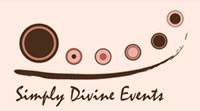Bad, menu! Bad!
Jul 21st, 2010
Have you ever gone out to eat with the best of intentions and then end up totally gorging yourself? Well, it may not be your lack of willpower to blame. Menus are actually designed to sabotage your diet. Granted, the restaurant is not trying to make you fat, only push the higher profit items which are usually the ones that are the worst for you. Women’s Health reveals the tactics restaurants use so you never fall for them again.
Trick No. 1: Pictures that look good enough to lick
A study in the Journal of Consumer Research found that large, vivid images increase the probability that you’ll impulsively order that food. And where the photo is placed also matters: The most profitable items get prime real estate, which in the menu world is the upper corners and the center of the page—hot spots where your eyes naturally travel. “The more attention we can bring to an item, the more likely you are to order it,” says Gregg Rapp, a menu engineer consultant in Palm Springs, Calif.
Trick No. 2: Healthy options next to the fattening ones
You’d think this would help us eat better, but the opposite is true: A study at Duke University found that people are actually more likely to choose a higher-calorie dish when healthy fare is offered right beside it. Crazy as it sounds, “just reading about a salad makes you feel like you’ve satisfied your nutrition goals and are free to go nuts and indulge,” says study author Gavan Fitzsimons, Ph.D., a professor of marketing and psychology at Duke.
Trick No. 3: Lots of produce in plain sight
The presence of veggies—even if they’re carb-coated, deep-fried, and cheese-slathered—convinces you that you’re making the right food choices. Don’t fall for it! “A seemingly healthy addition to a less-than-wholesome dish sounds like a smart compromise,” Yang says. But in reality, these “veggie” delights can often be worse for you than more notorious diet killers like pizza and hamburgers.
Trick No. 4: Sampler platters that seem so innocent
Instead of ordering a few apps, you get the sampler, thinking you’ll try just a wee bit of everything offered. But research from the University of Pennsylvania reveals that when you’re given a wide selection, you’ll eat 10 percent more than you would have if there had been only one option. That’s because having more variety makes you feel as if you’re not eating as much. In other words, when you’re given a couple of mozzarella sticks as opposed to the usual six, you feel entitled to gobble those up and then move on to the chicken wings, the potato skins, the poppers, and so on.
Source: womenshealth.com
Written by Lea Barlow • Leave a comment















